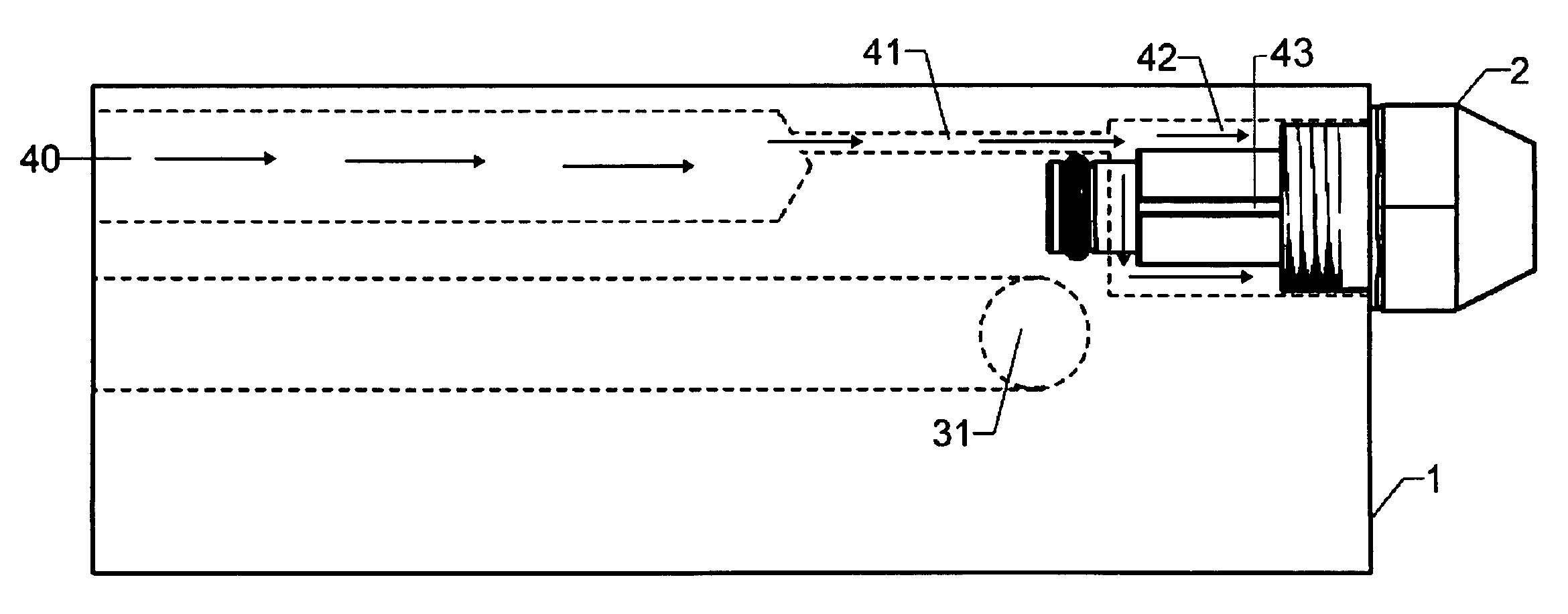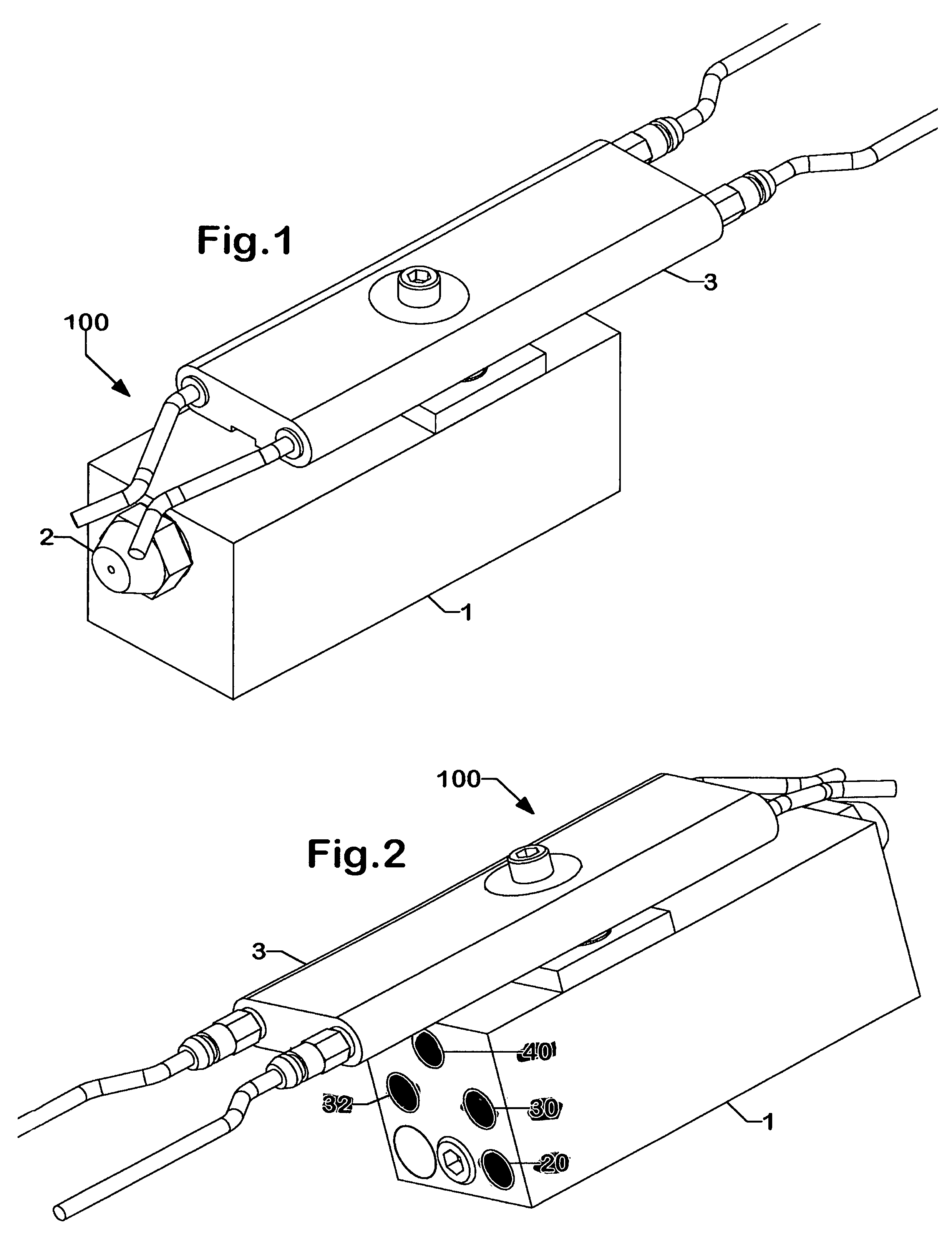Oil preheater for a multi oil burner
a multi-oil burner and oil preheater technology, which is applied in the direction of burners, combustion types, combustion processes, etc., can solve the problems of large electricity consumption of prior art inventions, large amount of discarded oil disposal, and large amount of waste oil, so as to improve the dependability of a multi-oil combustion system, minimize preheat temperature fluctuations, and reduce the effect of preheating temperature fluctuations
- Summary
- Abstract
- Description
- Claims
- Application Information
AI Technical Summary
Benefits of technology
Problems solved by technology
Method used
Image
Examples
Embodiment Construction
[0045]A preferred embodiment of the present liquid heated multi oil preheat invention is illustrated in FIGS. 1 and 2 isometric views. The present invention, a liquid heated multi oil preheat device 1 is shown with a nozzle 2 and an igniter 3 attached to it which provide a means of atomizing and igniting the preheated oil as was previously described. This assembly comprising of preheat device 1, nozzle 2 and igniter 3 will be referred to as assembly 100. Within preheat device 1, the materials of combustion are directed and distributed to nozzle 2 via machined channel circuits. Inside preheat device 1 there is a heated liquid passageway which allows a heated liquid to circulate within while conductively transferring heat energy through preheat device 1 to oil and compressed air as it passes through preheat device 1 to nozzle 2. These channels will be discussed later in more detail with FIGS. 3, 4, 5 and 6. In its simplest form, preheat device 1 is a liquid to liquid heat exchanger. N...
PUM
 Login to View More
Login to View More Abstract
Description
Claims
Application Information
 Login to View More
Login to View More - R&D
- Intellectual Property
- Life Sciences
- Materials
- Tech Scout
- Unparalleled Data Quality
- Higher Quality Content
- 60% Fewer Hallucinations
Browse by: Latest US Patents, China's latest patents, Technical Efficacy Thesaurus, Application Domain, Technology Topic, Popular Technical Reports.
© 2025 PatSnap. All rights reserved.Legal|Privacy policy|Modern Slavery Act Transparency Statement|Sitemap|About US| Contact US: help@patsnap.com



